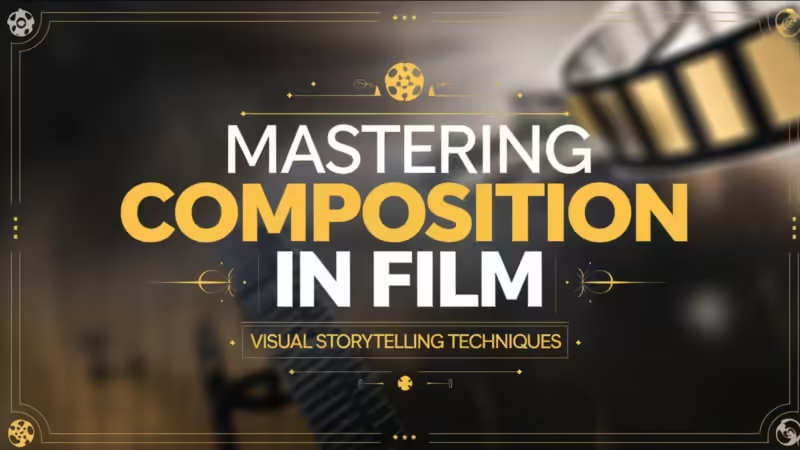Visual metaphors are powerful tools in cinema, allowing filmmakers to convey complex ideas and emotions without the need for dialogue. These symbolic images enhance storytelling and create a deeper connection between the audience and the film. Let’s explore ten of the most impactful visual metaphors in cinema and their significance. So to understand the languages of films, here is a list of top 10 Visual Metaphors in cinema.
1. The Eye: Perception and Knowledge
One of the most common visual metaphors in cinema is the eye, often representing perception, knowledge, and insight. In films like The Graduate (1967), the close-up of the protagonist’s eye signifies his awakening to the realities of adulthood. Additionally this metaphor invites viewers to consider what is seen and understood, emphasizing the importance of perspective.
2. Water: Change and Renewal
Water is frequently used as a metaphor for change and renewal. In The Shape of Water (2017), the fluidity of water reflects the characters’ emotional journeys and transformation. Where as this metaphor reminds audiences of the power of love and connection, suggesting that true transformation comes from embracing vulnerability.
3. Broken Mirrors: Identity and Self-Reflection
Broken mirrors are a striking visual metaphor for identity and self-reflection. In Black Swan (2010), the shattered mirror symbolizes the protagonist’s fractured psyche as she struggles with her dual identity. So this metaphor visually represents the conflict between her public persona and her inner self, drawing the audience into her psychological turmoil.
4. Shadows: Fear and Doubt
Shadows often symbolize fear and doubt, lurking just out of sight. In The Godfather (1972), shadows play a crucial role in creating a sense of foreboding and danger, in scenes involving Michael Corleone. This metaphor not only highlights the darkness within the characters, but also suggests that their past actions cast long shadows over their lives.
5. Birds: Freedom and Confinement
Birds are powerful visual metaphors representing freedom and confinement. In The Shawshank Redemption (1994), the image of a bird flying free symbolizes hope and liberation. The protagonist’s journey toward freedom is mirrored by the birds, which illustrates the struggle against confinement and the yearning for a better life.
6. Chains: Oppression and Struggle
Chains are a potent metaphor for oppression and struggle. In 12 Years a Slave (2013), the chains worn by Solomon Northup symbolize the brutal reality of slavery and the fight for freedom. This visual metaphor powerfully conveys the weight of oppression and the desire for liberation, resonating deeply with viewers.
7. Red: Passion and Danger
The color red is often used as a visual metaphor for passion and danger. In Schindler’s List (1993), the little girl in the red coat stands out against the black-and-white backdrop, that symbolizes innocence lost amid the horrors of war. Particularly this metaphor highlights the emotional impact of violence and the importance of remembering individual stories within larger historical contexts.
8. The Staircase: Progress and Decline
Staircases are frequently employed as visual metaphors for progress and decline. In Inception (2010), the spiral staircase symbolizes the complex layers of the dream world and the protagonist’s journey through his subconscious. This metaphor reflects the intricate nature of human experience, to emphasize that every step taken can lead to new discoveries or deeper struggles.
9. The Clock: Time and Mortality
Clocks often symbolize time and mortality, reminding viewers of life’s fleeting nature. In Run Lola Run (1998), the recurring imagery of clocks underscores the urgency of the protagonist’s quest. This visual metaphor reinforces the idea that every second counts, which highlighs the tension between life and death.
10. The Door: Opportunity and Choice
Doors are powerful visual metaphors representing opportunity and choice. In The Matrix (1999), the choice between the red and blue pill symbolizes the decision between ignorance and enlightenment. This metaphor emphasizes the importance of choices in shaping one’s destiny, along with inviting the audience to reflect on their own life decisions.
Conclusion
Visual metaphors enrich the cinematic experience, allowing filmmakers to communicate complex themes and emotions in a single image. By understanding these top 10 visual metaphors, viewers can deepen their appreciation for the artistry and storytelling in film.
For more insights into cinematic techniques and film analysis, visit FilmsnMinds. We explore the intricacies of film and offer engaging content for movie enthusiasts!
Don’t forget to follow us on Facebook and Instagram for the latest updates and discussions on film!
Here are some external resources that relate to the topic of top 10 visual metaphors in cinema:
- “The Language of Film” – An article from the British Film Institute (BFI), discussing various cinematic techniques, including visual metaphors.
- “Visual Metaphors in Film: A Study” – A research paper available on ResearchGate, exploring the use of visual metaphors in film and their impact on storytelling.
- “Film Analysis: Understanding Visual Metaphors” – A guide on MasterClass, explaining how to analyze and interpret visual metaphors in movies.
- “Symbolism in Film: A Deeper Look” – An article from The Film Stage that discusses the role of symbolism, including visual metaphors, in filmmaking.
- “Understanding Metaphor in Film and Television” – A resource from Media Studies 101 that provides insights into the use of metaphors in visual storytelling across various media.
- “Metaphor and Meaning in Cinema” – An academic article on JSTOR examining the significance of metaphor in film narrative.
- “Visual Storytelling: The Art of Metaphor in Film” – A blog post on IndieWire discussing how filmmakers use visual metaphors to enhance storytelling.
- “The Importance of Visual Metaphors in Film” – A video essay from YouTube that explores several examples of visual metaphors in popular films.
- “Understanding Film Techniques: Visual Metaphors” – A course on Coursera that covers various film techniques, including the use of metaphors.
- “The Role of Visual Metaphors in Cinematic Language” – A TED Talk or presentation that delves into how visual metaphors shape our understanding of film narratives.
These resources will not only provide you with a deeper understanding of visual metaphors in cinema but also enhance your appreciation of the art of filmmaking.
Visual metaphors in films Film symbolism Iconic movie metaphors Cinematic visual metaphors Metaphors in cinema Symbolism in movies Movie imagery and meaning Film analysis techniques Top visual metaphors in film Understanding visual metaphors










